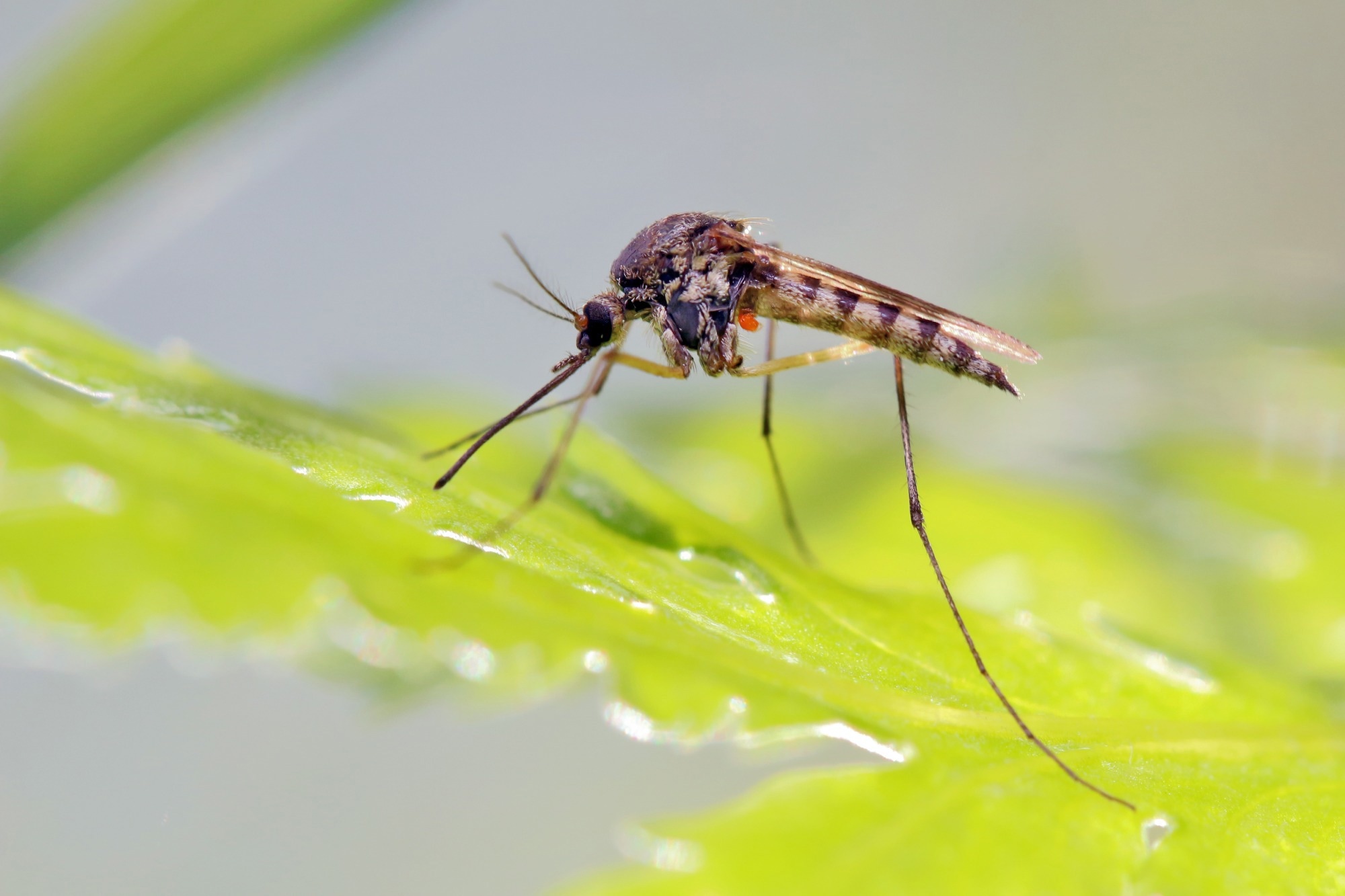In an article recently published in the journal Scientific Reports, researchers proposed a novel approach to identifying Aedes mosquito species based on their wing images using convolutional neural networks (CNNs).
 Study: Wing-Based Mosquito Species Identification with CNNs. Image credit: Achkin/Shutterstock
Study: Wing-Based Mosquito Species Identification with CNNs. Image credit: Achkin/Shutterstock
Background
Mosquitoes are the most crucial arthropod vector group that causes millions of human infections and thousands of deaths every year. The medical relevance of mosquito species varies significantly as every species is characterized based on a species-specific vector capacity, like vector competence, host preferences, breeding site types, and distribution.
Thus, accurate identification of species is essential to evaluate the local risk of mosquito-borne disease outbreaks and implement proper control measures. However, the morphological identification of mosquitoes requires substantial entomological experience and well-equipped laboratories.
The potential of CNNs
Image-based species identification using CNNs represents a time-saving and cost-effective alternative to morphological identification. Many studies have displayed the potential of CNNs for mosquito species identification, including for cryptic species differentiation. A 97% accuracy has been achieved in mosquito identification using CNNs.
However, these studies used images from the entire mosquito body to train their CNNs, which is a difficult approach as the photographed specimens' conditions can strongly affect the classification accuracy.
Additionally, CNN needs images from multiple points of view to provide consistent results, which increases the effort required for image dataset creation. Thus, training CNNs based on whole mosquito bodies needs a substantial number of images and rigorous data augmentation for optimizing the classification accuracy, requiring long training time and expensive hardware.
The proposed approach
In this study, researchers developed a CNN to identify seven Aedes species by only wing images instead of using whole mosquito body images. As the two-dimensional wings allow standardized image capture and decrease the CNN implementation complexity, the objective of this proof-of-concept study was to analyze the potential of CNNs to identify mosquito species by wing images.
Wings remain under specific evolutionary selection pressure as the wing beat frequency impacts the mosquitoes' assortative mating behavior, resulting in species-specific wing morphology. Studies have also validated wings as an adequate anatomical feature for differentiating mosquito species, including cryptic mosquito species. Additionally, using wing images for CNN-based species identification reduces the image variety required for effective CNN training.
Moreover, species can be identified even when the scales and legs of field-sampled mosquitoes are damaged using one well-preserved wing. Mosquito wings can also be stably stored for a long duration by easily mounting them in an embedding medium.
Mosquitoes were sampled from various sites in Germany, and their wings were mounted and photographed using a professional stereomicroscope. The dataset contained 1155 wing images and 554 wing images from seven Aedes species and different non-Aedes mosquitoes, respectively.
The CNN developed in this study had lower hardware requirements as it possessed a shallow architecture. Although two CNNs with a similar architecture were trained, they had different numbers of neurons in the fully connected layer. The CNNs were trained to differentiate between non-Aedes and Aedes mosquitoes and to classify the seven Aedes species, including the native and exotic species, based on RGB and grayscale images.
Researchers used grayscale images as they hypothesized that these images would not lead to a loss of relevant information for species identification as the native mosquitoes' wing scales are either black or pale. Additionally, the grayscale image conversion increases the contrasts between the background and wing veins and decreases the file size per image, which reduces the requirements and computing effort for the CNN complexity. Image processing, data augmentation, validation, training, and testing were performed in Python using the deep learning (DL) framework PyTorch.
Significance of the study
The trained CNN achieved 97% precision, 97% sensitivity, and 97% F1-score for the differentiation between non-Aedes and Aedes species based on grayscale images. However, the CNN realized a 99% F1-score, precision, and sensitivity for the differentiation between non-Aedes and Aedes species based on RGB images.
Additionally, the CNN achieved 90% precision, 91% sensitivity, and 90% F1-score for the classification of seven Aedes species, including Aedes albopictus, Aedes cinereus, Aedes communis, Aedes punctor, Aedes rusticus, Aedes sticticus, and Aedes vexans, based on grayscale images.
However, the CNN showed better performance by realizing 91% precision, 94% sensitivity, and 91% F1-score for classifying seven Aedes species based on RGB images. Aedes albopictus was classified with 100% accuracy for both RGB and grayscale images. Misclassifications were only observed among the native Aedes species, specifically between Aedes punctor and Aedes communis. To summarize, the findings of this study demonstrated that mosquito species can be effectively identified using CNNs based on wing images.
Journal reference:
- Sauer, F. G., Werny, M., Nolte, K., Becker, N., Kiel, E., Lühken, R. (2024). A convolutional neural network to identify mosquito species (Diptera: Culicidae) of the genus Aedes by wing images. Scientific Reports, 14(1), 1-11. https://doi.org/10.1038/s41598-024-53631-x, https://www.nature.com/articles/s41598-024-53631-x